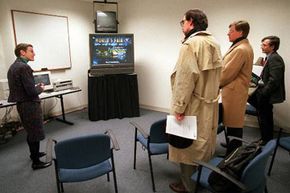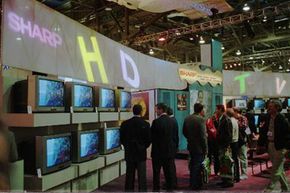High-definition televisions (HDTVs) are competing with standard televisions for shelf space in electronics stores. And the HDTVs are winning. But where does this technology come from, and how old is it?
The answer may surprise you. While HDTV is a little more than 10 years old in the United States, the technology's origins date back much further. To learn about the first HDTV sets, we need to head over to Japan.
Advertisement
By the late 1960s, Japan had established itself as an innovative and technologically oriented country. While much of the world viewed Japan as the birthplace of cheap electronics, Japanese companies and even the Japanese government poured resources into technological development.
One area of development was in television broadcast. Improving broadcast standards in Japan would lead to a new market for high-end televisions. The NHK Corporation -- also known as the Japan Broadcasting Corporation -- decided in 1968 to create a new standard for television broadcasting. In the 1970s, Japanese engineers developed the MUSE high-definition system.
Panasonic designed a prototype television in 1974 capable of displaying 1,125 lines of pixels [source: Consumer Electronics Association]. Standard-definition television can only display 480 lines. The Panasonic television followed NHK's standards -- an analog signal that packed more information than traditional television signals.
By the 1980s, NHK had developed the technology to the point that it was time to shop around for other customers. It became clear that if NHK could convince the world to adopt its standards, Japanese television manufacturers would make a fortune.
Japan's advances in television broadcast technology coincided with a politically charged situation in the United States. If it weren't for a metaphorical game of tug-of-war between television broadcasters and companies invested in two-way radio communications, HDTV may not have made its way to the United States.
Advertisement

